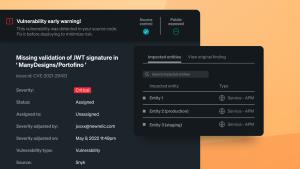In the United States, just about anybody with a few dollars to his or her name can get a bank account, and almost anyone with a bank account can get a credit card. This, however, is not the case everywhere. In Chile, for example, only 30% of the eligible population owns a credit card. In Africa, two-thirds of the population lack bank accounts, and 98% percent of transactions are carried out in cash. And in India—a country of 1.4 billion—only 49 million people hold credit cards.
Indeed, lack of easy, fast access to cash and credit is a real problem for much of the globe—hindering commerce and creating barriers to success, especially in rural and underdeveloped areas. Today, three financial technology (FinTech) firms—Cellulant, Banco de Crédito e Inversiones, and ZestMoney—are looking to change that, using technology to disrupt markets and bring banking and credit services to the underserved masses.
While each organization is offering a unique solution targeted to the particular needs of its geographical region, all three have at least two things in common: They’ve taken their operations to the cloud with Amazon Web Services (AWS), and they’re using New Relic monitoring to provide the visibility they need to ensure that their services are constantly available to a rapidly growing customer base.
Cellulant: Building a digital payment platform by Africans for Africa
Established in 2002 by Ken Njoroge and Bolaji Akinboro to provide ring-back tones for mobile subscribers, Nairobi- and Lagos-based FinTech firm Cellulant (which has a presence in 18 markets) soon found itself pivoting into digital payments and designing a digital wallet when it faced difficulties facilitating payments for businesses and online merchants from mobile network operators and banks in the fractured African financial marketplace. It didn’t take long for the company’s founders to realize that a payment system like the one they had designed could be enormously beneficial throughout Africa for businesses, mobile money operators, banks, merchants, and customers alike.
After becoming the first company to connect banks with Kenya’s M-Pesa mobile money transfer service, Cellulant went on to build Tingg, a digital payment platform to power the marketplace ecosystem. The company’s next goal was to make Tingg ubiquitous across the continent. Well on its way to meeting that goal in April 2018, however, Tingg experienced a catastrophic failure when a discounted offer resulted in a wave of traffic that crippled the system.
While it was already considering migrating its platform to the cloud for the cost savings and flexibility, Cellulant got very serious fast and quickly settled on AWS. Knowing that the transition would necessitate “re-platforming” and rewriting significant portions of its code, the company also began looking at New Relic's monitoring capabilities to facilitate cloud migration and ensure seamless application and infrastructure performance going forward. Two years and a multitude of successful transactions later, the company has never looked back. Tingg became Africa’s first super-app offering a unified digital wallet in eight markets.
All of the newfound visibility provided by New Relic has led to a raft of benefits for Cellulant, including:
- A 25% reduction in infrastructure costs
- A graceful transition to DevOps
- Faster issue resolution
- Happier users
To learn more about Cellulant’s use of New Relic, read the full case study.
Banco de Crédito e Inversiones: Ensuring access to the best financial services for all
Founded in 1937 to serve the small and medium-size businesses at the heart of Chile’s economy, Santiago-based Banco de Crédito e Inversiones (BCI) has since become one of Chile’s largest banks. One thing that hasn’t changed over time is BCI’s focus on making sure that everyone has access to the best financial services. That’s why in 2017, BCI decided to disrupt Chile’s financial system by offering—at no charge, and with no requirement for a bank account—prepaid cards (available through a mobile app), which customers could use to make purchases in international stores, pay friends, get cash from ATMs, and more. Today, that service is known as MACH.
Knowing that the market for a first-of-its kind service in Chile would be enormous, the MACH team went cloud-native from day one so that it could easily and economically scale to meet a rapidly growing customer base. That decision turned out to be a good one: The MACH platform—composed of more than 30 microservices running in Docker containers hosted in the AWS cloud—gained a million users in the first year of its existence, and now exceeds 2 million users. And while the environment scaled admirably to meet its demand, New Relic monitoring played a big part in its successful deployment.
The day that New Relic really proved its worth was when MACH’s referral program went viral. “Our traffic grew to 25 times what we were used to, and we managed to register 100,000 users in just two days,” says Ignacio Gajardo, BCI’s MACH chief technology officer. “With New Relic instrumentation in place, we were able to get a really interesting glimpse into how our services and environments behaved when stressed in ways we’d never seen before or tested. This was a real confidence builder for our team.”
Not surprisingly, the MACH team’s confidence continues to grow as their use of New Relic expands. Among the many benefits afforded by New Relic monitoring are the following:
- An empowered DevOps team
- Increased innovation
- Faster issue resolution and lower error rate
- Optimized costs
To learn more about BCI’s use of New Relic, read the full case study.
ZestMoney: Delivering fast, reliable, and affordable EMI services across India
In India, a large cross-section of the population has traditionally had a difficult time qualifying for credit, thanks to low income and poor or non-existent credit histories. ZestMoney, an innovative, Bengaluru-based FinTech firm, is on a quest to change this with an automated system—online and mobile—that enables people to apply for and get a decision on credit within minutes.
Not surprisingly, Indians are embracing the ZestMoney digital solution. Today, with more than 3,000 partners serving a customer base of 6 million, ZestMoney is betting big on the offline space through integrations with pioneers like Pine Labs. Through these integrations, ZestMoney plans to enable more than 20,000 touch points across the country by the end of 2020—and in so doing, fulfill its mission of making life affordable for 300 million households across rural and urban India.
But how can ZestMoney achieve this scale while still delivering on performance and customer experience expectations? In short, by turning to AWS for its cloud platform and to New Relic to ensure an error-free and highly optimized end-to-end process (encompassing more than 80 microservices). Today, ZestMoney relies heavily on New Relic to instrument and monitor the full breadth of its cloud, container, and application environment. ZestMoney also uses New Relic to help meet performance objectives for its applications and operating environment, and to provide ongoing visibility into service performance and health.
As a result of its use of New Relic, ZestMoney has been able to:
- Resolve issues before they impact customers
- Optimize resource usage
- Free up engineers to focus on development
- Provide multiple teams with infrastructure and application data that’s specifically relevant to them
To learn more about ZestMoney’s use of New Relic, read the full case study.
The views expressed on this blog are those of the author and do not necessarily reflect the views of New Relic. Any solutions offered by the author are environment-specific and not part of the commercial solutions or support offered by New Relic. Please join us exclusively at the Explorers Hub (discuss.newrelic.com) for questions and support related to this blog post. This blog may contain links to content on third-party sites. By providing such links, New Relic does not adopt, guarantee, approve or endorse the information, views or products available on such sites.



